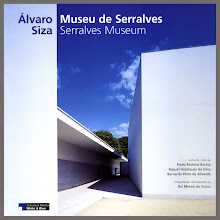.
Leica M3+Versenkbar Summicron 5cm+Leicameter MC
(Camera and lens from the same vintage: 1955)
Introduced in April, 1954 – yes, that is 58 long years ago!!! - the Leica M3 was the first Leica to have a bayonet mount - the Leica M mount – permitting that lenses are changed faster and easier.
Previous Leicas were screw mount (The Leica Thread Mount - or M39 - was used on all previous Leica models with interchangeable lenses. The Leica IIIg released in 1957 - three years after the introduction of the M3 - was actually the last screw-mount Leica).
Comparing to former Leicas, the finder on the M3 – the first Leica finder to combine rangefinder and viewfinder into one window - is much improved, being of larger diameter and exceptionally bright.
The base length of the M3 rangefinder has been increased to 68,5mm for greater accuracy and the M3 finder has a high magnification factor of 0,92x. That together with framelines for 50, 90 and 135mm, make the M3 the rangefinder camera of choice for the normal and longer lenses.
The 50mm framelines are permanently visible in the finder, while the 90 and 135mm are shown when such a lens is inserted in the camera, or when you activate the finder frame preselector located on the front of the body (the first M3s didn’t have the preselector lever!).
The parallax error is compensated in the Leica M3 by moving the framelines diagonally through the field during focusing.
For wide-angle shooting use a separate viewfinder slid into the accessory shoe, or use a 35mm lens having the “goggles” that correct the frame of view attached.
Leica M3 + Visoflex III + Telyt 4/200mm
Leica M3 + Visoflex III + Telyt 4.8/280mm
Some other important features of the then new Leica M3 can be resumed as follow:
- Easier film loading with the opening backdoor (previous Leicas had only bottom loading);
- The transport lever used to tension the focal plane shutter and advance the film by one frame (former screw-mount Leicas had a winding knob);
The first M3s had the so called double-stroke, as in the case shown in this post: you have to wind with two short strokes. Later on, Leitz changed the film winding of the Leica M3 - and all subsequent models - to single-stroke film advancement.
- A single non-rotating shutter speed dial to control the exposure times (LTM Leicas had a second dial for slow shutter speeds). Shutter speeds set before or after winding.
- The film counter automatically returns to its starting position when the take-up spool is withdrawn.
- Built-in self-timer.
Some thoughts about the year of 1955?
Elvis Presley made is 1st TV appearance, Allen Ginsberg’s poem “Howl” is considered obscene, Winston Churchill resigns as British PM, Gaullists lose elections in France, West Germany joins NATO, Warsaw Pact is signed, Bill Halley hits nr.1 with “Rock Around the Clock”, Carl Perkins records “Blue Suede Shoes”, and so on, and so on…
It was still a long time coming for the world to know and hear about The Beatles, men landing on the moon was still a dream waiting some 14 years to become true, Portugal still had longer to wait to be a country free of dictatorship…
And all this time the Leica M3 was shooting and shooting and shooting…
Fátima, 13th of May 2011
(Leica M3 + Elmarit-M 28mm)
1955 was also the year of my birth...
...and the Leica M3 keeps on shooting... keeps on shooting... keeps on shooting...
Long live the Leica M3!
.
.


















































































+copy.jpg)
+copy.jpg)
+copy.jpg)
+copy.jpg)
+copy.jpg)
+copy.jpg)